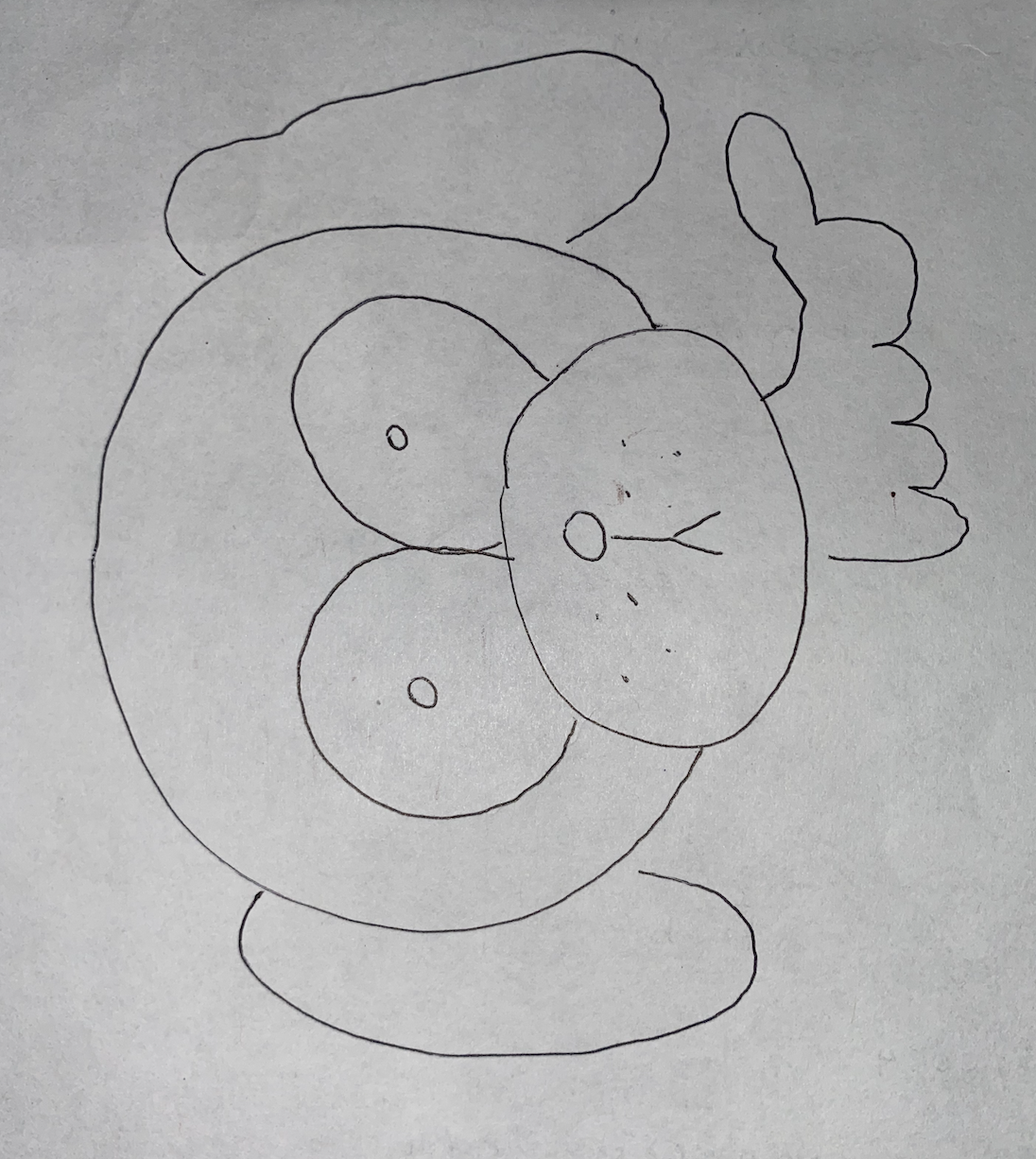
Text/Transcript: While drawing out the featured image, the informant said this: “There once was a man with no arms. And then he was attacked by bees. And so, to escape the bees, he jumped into a pond. But he had so many stings that he didn’t know what to do, so he ran to the police department, but they didn’t help him, because they can’t help with bee stings. And then he went to the fire department, but they couldn’t help him, cause they don’t help with bee stings. And so they told him to go to the hospital, so he ran all the way across town to the hospital and they put two little bandaids on his bee stings. And then you have a puppy.”
Context: G is a 20 year old USC junior majoring in theater. They are from North Carolina and have been living in Los Angeles for three years.
G remembers this rebus of sorts from childhood. It’s a simple visual story told while drawing. The ‘puzzle’ begins with an armless stick figure (the nose and mouth), then adding dots as the bee stings (whiskers), the circle as the pond (face), more circles as the police + fire departments (the eyes), a large circle as the hospital (the head), and finally ovals on the sides as the bandaids (the ears). G notes that she is not sure the ears were originally bandaids, and that she improvised that bit. They also added the body for fun – it’s not part of the original rebus.
G remembers being taught this by a classmate at some point in grade school.
Interpretation: Amusement is valued and simplistic in grade school. I think of this folk drawing as something children will do to entertain themselves; to make each other laugh. This pseudo-rebus, in particular, is reminiscent of an elementary school experience either lacking technology or with minimal technology. In the early 2010s, when my informant was in grade school, technology had not entirely taken over learning spaces. It’s especially fitting that this was drawn on the back of her release form, as she mentioned remembering drawing it on the back of worksheets. This is a kind of folk drawing/speech that requires children to be a little clever and, although it looks different depending on the person drawing it, it is intended to look like a dog and is amusing to young children because of that. It’s purpose seems to be both amusement and relationship-building, as it’s something passed to a classmate (presumably a friend) to share in that amusement. There isn’t any intended cruelty to the receiving end of the puzzle, it’s something to enjoy together.
